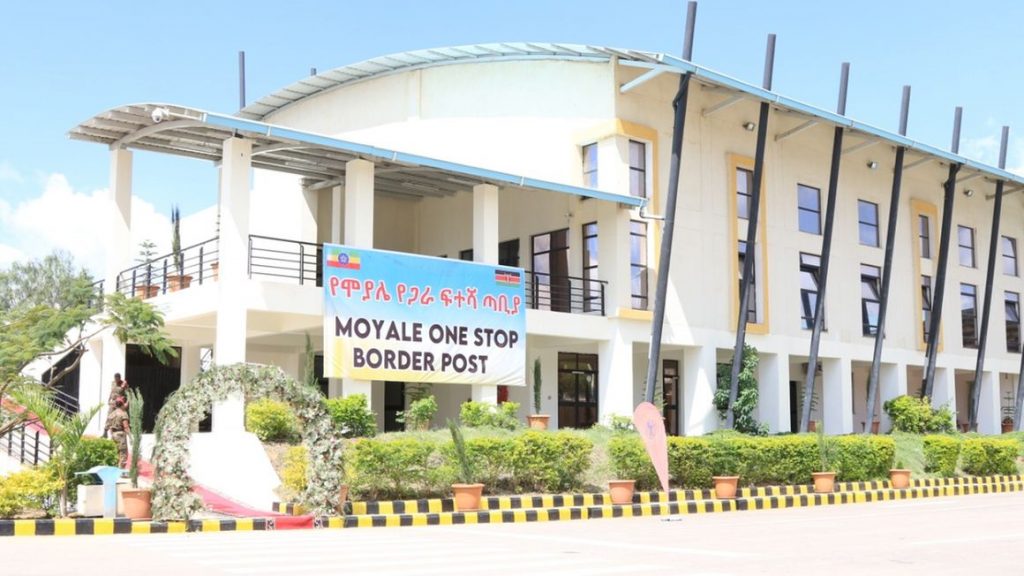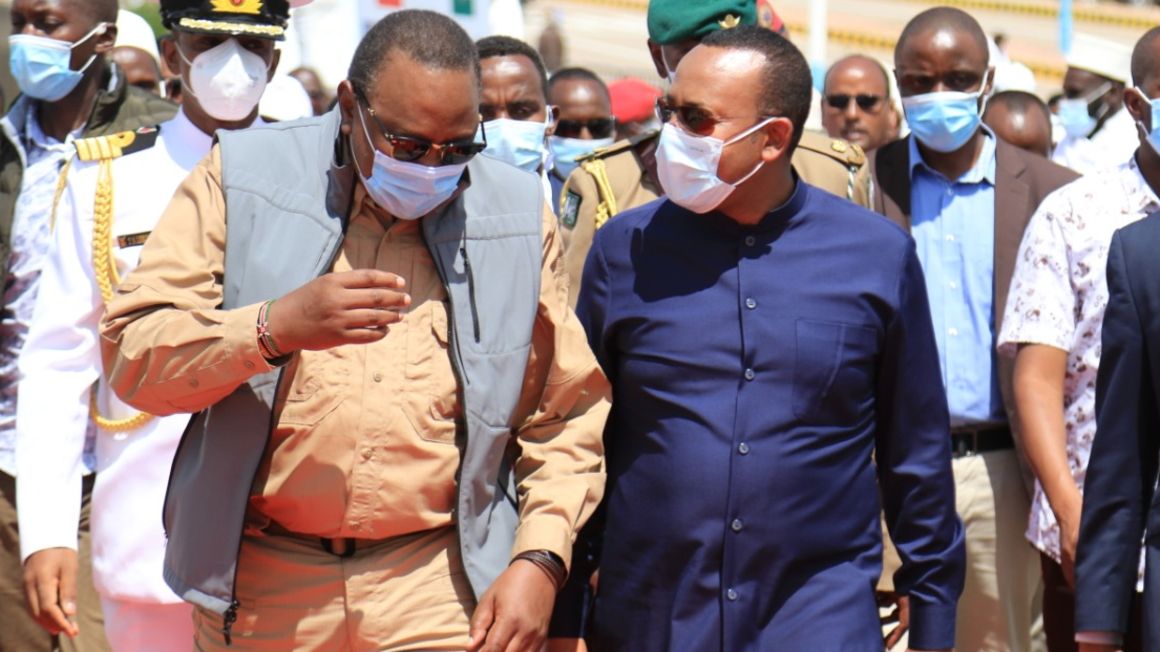Kenya’s President Uhuru Kenyatta and Ethiopia’s Prime Minister Abiy Ahmed opened a cross-border highway and a one-stop border post (OSBP) that will boost trade ties between both Eastern African countries.
For Abiy, the event provided a respite as he shifted focus away from the war against the country’s Tigray community, which the United Nations has voiced alarm after their troops came under fire as they tried to access the restive region.
Both leaders cut the ribbon on a mega-highway linking southern Ethiopia with Kenya’s Indian Ocean port of Lamu. And Abiy inspected a guard of honor mounted by the Kenya Defense Forces (KDF) after which he toured the newly launched one-stop border post in Moyale, on the border between both nations.
The border post is part of the planned Mombasa-Nairobi-Addis Ababa corridor linked by the 502-kilometre Hawassa-Moyale road project in Ethiopia, and the Isiolo-Moyale road in Kenya.
Prime Minister Abiy said the inauguration of the OSBP is a clear demonstration of the commitment to enhanced trade by both countries.
“By aligning the working days and hours, procedures and formalities as well as through the development and sharing of common facilities and joint controls, the border post will reduce the time taken and costs incurred to clear good across both borders,” he said.
“Bringing under one roof essential trade services of both countries, revenue and customs authorities, immigration, security, trade plus many other services demonstrates the capacity for enabling economic transformation,” PM Abiy added.
Abiy, a Nobel Peace Prize Winner in 2019, launched a military offensive against the Tigray community, a conflict that has killed thousands and displaced more than 950,000 according to UN estimates.
The war has also drawn in regional neighbors with Eritrea accused by the U.S. State Department of fighting in Tigray with Ethiopian federal troops against their common enemy, Tigray People’s Liberation Front (TPLF).
The conflict may hurt Ethiopia’s economy that had been soaring, albeit from a low base, becoming the world’s fastest growing economy in 2017 as result of increased agricultural exports and heavy infrastructure spending.
Ethiopia was for years trying to position itself as an emerging industrial hub that would draw its 115 million population – the second largest in Africa – off subsistence farms and into factories.
For more than a decade, the government poured billions of dollars into hydro-electric dams, industrial parks, railways and highways. Then when Abiy took power in 2018, he began opening up sectors like telecoms to private investment. Those aspirations are now at risk. Instability that began even before the Tigray conflict – due to ethnic clashes and other problems – may scare off investors already skittish about the impact of COVID-19 and rapidly-rising Ethiopian government debt. Foreign textiles firms worry about existing investments.

Ethiopia is also seeking Kenya’s support in a conflict with Egypt over filling its Grand Renaissance Dam. Kenya is one of eleven countries in the Nile Basin region and has previously accused Addis Ababa of building a dam (Gibe III) on River Omo that reduced the shares of water on Lake Turkana, the world’s largest desert lake.
The lake once overlapped across both Eastern African countries but today is firmly within Kenyan borders as it has lost much of its size.
The Ethiopia-Kenyan border straddles over 830km of its territory, yet has only one OSBP in Moyale, Marsabit County. An OSBP is a border crossing point where migration officials of both countries operate under one roof to facilitate trade and ease the movement of goods and people.
It was hoped that the border post would be commissioned last year after construction was completed in 2018 at a cost of over $8 million, but due to tensions at the border, this was postponed.
Trade between Ethiopia and Kenya remains comparatively low compared to with their other neighbors like Djibouti and Uganda respectively. Despite both countries having a mutual defense pact since 1965 and similar ethnic communities like the Oromo, movement of goods and people across the border has remained low. (Prime Minister Abiy himself hails from the Oromo, the largest community in Ethiopia, and one of the largest tribes in Northern Kenya.)
Abiy and Kenyatta later flew to inspect the building of a port in Lamu, on the Kenyan coast, which will service Kenya, Ethiopia and South Sudan via planned rail lines, roads and a pipeline, a project called LAPSSET.
Launched in 2012, LAPSSET will also include an oil pipeline that would run from the Kenyan port of Lamu to Addis Ababa, among other major infrastructure projects aimed at improving connectivity and boosting bilateral trade in the region.

